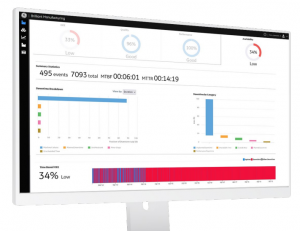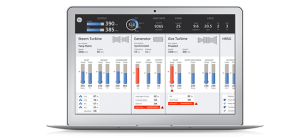With the recent release of GE Digital’s new Plant Applications Manufacturing Execution (MES) solution, hybrid manufacturing companies are now able to benefit from improved operational visibility for more effective decision-making.
Plant Applications, commonly referred to as ‘Plant Apps’, has been consistently updated over the last 20 years to develop into a true best-in-class product. Used by over 700 manufacturers worldwide, the eagerly awaited Plant Apps 7 upgrade was demonstrated at this year’s Hannover Messe. Key selling points include the support of efficiency, safety and quality initiatives, ‘Off the shelf’ supportability and product road map. The new software is also built with GE’s Brilliant Manufacturing and industrial internet developments in mind, such as the Web HMI and Thingworx interface.
The product spans two parts of business activity: traditional control systems and business systems (MRP II/ERP). Despite promising significant operational benefits, MES software solutions have historically been somewhat sticky for vendors and system integrators to sell; overlaps in ERP, MRP and MES offerings have made it difficult for customers to distinguish the systems worthy of investment. This has resulted in widespread and woefully inadequate practices, such as recording downtime events and reasons on basic spreadsheets, or even handwritten records. So the question remains: why should companies change now? The difference is that although big gains in efficiency (>10%) are relatively easy to achieve without dedicated systems, it is the smaller gains that provide the competitive edge. Finely tuned efficiency requires advanced analytics and powerful computing systems. Most companies recognise the benefits of some kind of over-arching IT system, and MRP software offers SMEs a better solution without the need to invest in expensive global ERP products. Where MES comes into its own is the production-specific functionality it offers for manufacturers. It can also be designed flexibly to meet individual business needs.

MES Production Management ‘Track & Trace’ – what to expect
- MES communicates between the MRP system, users and automation systems, including any batch execution systems and its recipes
- It controls the ‘Bill of Materials’ – quantities and types of raw materials, precision timings and packaging
- Enables traceability and genealogy
- Manages shift patterns and teams
- Provides real time visibility and efficiency: in the event of broken parts or machine failure, it will inform where the failure has taken place and, provide a targeted number of reasons why this will have happened so the user can choose the best-fit answer, and measure unexpected downtime
- Quality control via automated spot checks, accurate recording of events
- Waste minimisation
Andy Tripp, Managing Director of Astec comments,
“This isn’t about fancy technology and data collection for vanity’s sake. Investment in modern MES will form an integral part of the journey towards building a digital factory for future survival. This particular software product from GE has evolved from a rich heritage of best practice improvements. Once implemented, it will form a pivotal part of an organisation’s network infrastructure, industrial internet-readiness and digital strategy.”
 Astec are the sole Premier Solution Partner (PSP) in the UK for GE Digital. While Astec remains vendor agnostic, the company’s unparalleled GE product knowledge results in GE-centric solutions that are engineered using product-based configuration. This maximises existing product features and functionality and avoids unnecessary customisation for fully supportable, future-proof solutions. To find out more about how Plant Applications from GE Digital take your operations to the next level, contact us or download the product datasheet.
Astec are the sole Premier Solution Partner (PSP) in the UK for GE Digital. While Astec remains vendor agnostic, the company’s unparalleled GE product knowledge results in GE-centric solutions that are engineered using product-based configuration. This maximises existing product features and functionality and avoids unnecessary customisation for fully supportable, future-proof solutions. To find out more about how Plant Applications from GE Digital take your operations to the next level, contact us or download the product datasheet.
 Whilst Astec is vendor agonistic, the business continues to be closely aligned with GE Digital. Astec founder and MD, Andy Tripp asserts the motivation behind the alignment is for good reason.
Whilst Astec is vendor agonistic, the business continues to be closely aligned with GE Digital. Astec founder and MD, Andy Tripp asserts the motivation behind the alignment is for good reason. 